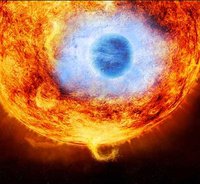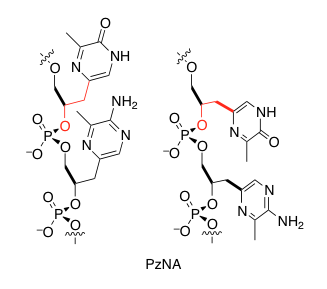
Detecting and characterizing exoplanetary atmospheres is an important step towards finding life on other planets. The light scattered in the planetary atmosphere is linearly polarized, and in general, when the planet revolves around the parent star, the scattering angle changes and linear polarization vary. The observed polarization variability exhibits therefore the orbital period of the planet and reveals the inclination, eccentricity, and orientation of the orbit. Due to their proximity to the star, hot giant planets with short orbital periods (Hot Jupiters) may develop peculiar atmospheres and halos which effectively scatter the light in the blue spectral region. This can give rise to a degree of polarization detectable with the currently existing modern polarimeters. Parameters of this polarization, e.g., wavelength dependence, are defined by physical conditions in upper layers of the planetary atmoshpere.
Recently, we have demonstrated that polarized reflected light can be detected from exoplanetary atmospheres (Berdyugina et al. 2008, 2011). We have determined for the first time the geometrical albedo in different colors and concluded that the high reflectivity ofthe hot Jupiter HD189733b in the blue due to Rayleigh scattering determines its blue appearance. This was confirmed with secondary eclipse spectro-photometry in the near UV (Evans et al. 2013). We continue our polarimetric survey using telescopes on the Canary Islands and Hawaii and routinely achieve polarimetric accuracy of 10^(-5). New observations and results will be presented in this talk.
We have also started a study of signatures of biological polarization, e.g., selective light absorption or scattering by biogenic molecules (Berdyugina et al. 2015). We have carried out a laboratory spectro-polarimetric study of light reflected by various bacterial types and terrestrial plants, which contained different photosynthetic and non-photosynthetic pigments. Measurements on non-biological samples (e.g., rocks and sands) were also performed in order to avoid false positives. These measured reflection spectra were then used to synthesize polarized spectra of Earth-like planets with various contributions from the land, photosynthetic organisms, ocean, atmosphere, and clouds. We estimate the required photometric and polarimetric sensitivity to detect such planets in habitable zones of nearby stars. We show that spectro-polarimetry provides a great advantage for high-contrast remote detection of biological photosynthetic organisms as compared to spectroscopy.
 Investigating Habitable Environments on Mars Using Orbital and Rover-Based Imaging Spectroscopy
Investigating Habitable Environments on Mars Using Orbital and Rover-Based Imaging Spectroscopy Chemical Gardens, Chimneys, and Fuel Cells: Simulating Prebiotic Chemistry in Hydrothermal Vents on Ocean Worlds
Chemical Gardens, Chimneys, and Fuel Cells: Simulating Prebiotic Chemistry in Hydrothermal Vents on Ocean Worlds The Synthesis of an Artificial Genetic Polymer: From Small Molecules to Proto-Nucleic Acids
The Synthesis of an Artificial Genetic Polymer: From Small Molecules to Proto-Nucleic Acids Quantifying Constraints on Metabolic Diversity Patterns
Quantifying Constraints on Metabolic Diversity Patterns